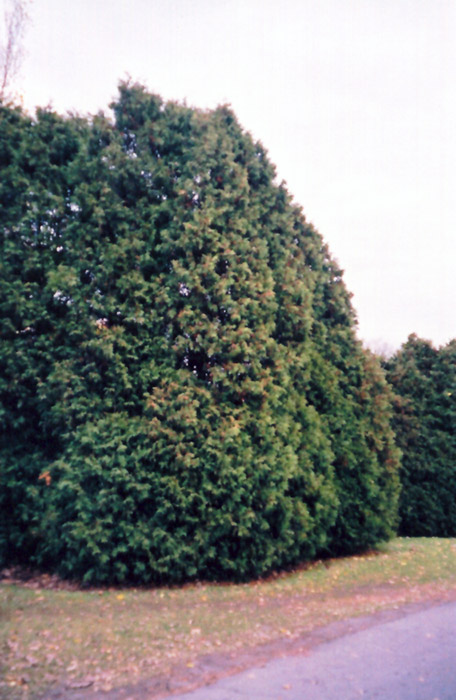Plant Finder
Height: 30 feet
Spread: 15 feet
Sunlight:
![]()
![]()
Hardiness Zone: 6a
Other Names: Platycladus orientalis
Description:
A beautiful and versatile evergreen tree; the species is typically a small multi-stemmed tree with a dense, pyramidal habit of growth, very adaptable, makes a great hedge; many diverse cultivars are available in every shape and form imaginable
Ornamental Features
Oriental Arborvitae is primarily valued in the landscape for its distinctively pyramidal habit of growth. It has rich green evergreen foliage. The scale-like sprays of foliage remain green throughout the winter. The shaggy antique red bark adds an interesting dimension to the landscape.
Landscape Attributes
Oriental Arborvitae is a dense evergreen tree with a strong central leader and a distinctive and refined pyramidal form. Its relatively fine texture sets it apart from other landscape plants with less refined foliage.
This is a relatively low maintenance tree. When pruning is necessary, it is recommended to only trim back the new growth of the current season, other than to remove any dieback. It has no significant negative characteristics.
Oriental Arborvitae is recommended for the following landscape applications;
- Shade
- Vertical Accent
- Hedges/Screening
Planting & Growing
Oriental Arborvitae will grow to be about 30 feet tall at maturity, with a spread of 15 feet. It has a low canopy with a typical clearance of 2 feet from the ground, and should not be planted underneath power lines. It grows at a slow rate, and under ideal conditions can be expected to live for 70 years or more.
This tree does best in full sun to partial shade. It is very adaptable to both dry and moist locations, and should do just fine under average home landscape conditions. It is not particular as to soil type or pH. It is somewhat tolerant of urban pollution, and will benefit from being planted in a relatively sheltered location. This species is not originally from North America.




